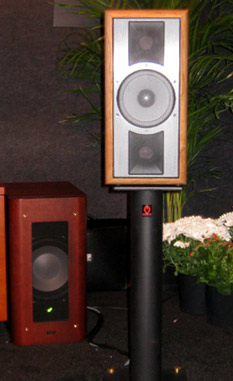Thiel Introduces Zoet (and We Didn't Even Know It)
The big challenge of high-quality multi-room audio has been the complexity of setup, particularly the wiring and hardware configuration. THIEL Audio is aiming to change all that with their introduction of zöet (rhymes with "poet," we think), touted as a true plug-and-play distributed audio/home theater system that anyone can unbox and have up and running in under an hour. The key lies in intelligent communication between the sophisticated processor unit and the linked speakers that comprise the system.
The self-powered zöet loudspeakers are IP-addressable so they can be placed anywhere in the home and connected to the zöet dB1 distribution processor using a pre-existing Ethernet network, or Thiel's own lossless proprietary wireless network, or a combination of both, which means no drilling to add new speaker wire. The entire system can be controlled with a single remote, which can simply be pointed at the nearest networked speaker.



The zöet controller was co-developed with technology partner BICOM, Inc., and it works with any music or movie source component with the controller decoding all of the most popular audio codecs, including PCM, Dolby TrueHD, Dolby Digital and DTS. Future codec support can be made available via firmware upgrades. An HDMI-enabled version of the dB1 processor also switches HDMI video sources, with HDMI pass-through to your external video processor or display device.
There are twelve analog
inputs (two locked in as stereo, leaving eight additional). This means you could configure it for four more stereo inputs, or one 7.1-channel input or one 5.1 input and an additional stereo input. For digital inputs, the dB1 features 4 coax digital and 4
TosLink digital input as well as eight HDMI inputs and two outputs (on the HDMI-enabled version). For outputs, you get 64 configurable
output channels, which can be 32 independent stereo zones or any combination of stereo and surround outputs that add up to 64 channels or less.